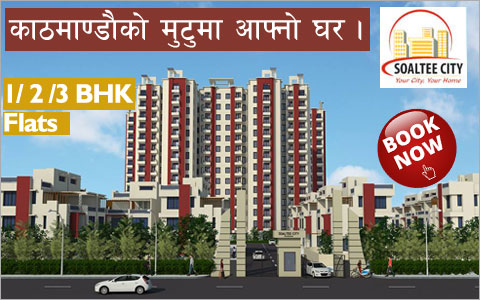National News

The government presented a budget of Rs 337.90 billion for the fiscal year 2010-11 through ordinance on Saturday giving utmost importance to infrastructure sector.
Of the total budget, Rs 190.31 billion (56.3 percent) will go to recurrent expenditure, Rs 129.53 billion (38.3 percent) to capital expenditure and Rs 18.04 billion (5.4 percent) for principal payment of loans.
The size of the budget is 30.4 percent more than last year’s un-audited real expenditure. The recurrent expenditure has been increased by 25.8 percent and capital expenditure estimation has enlarged by 44.8 percent. With the implementation of the budget, the government aims at growing the economy by 4.5 percent, keep inflation at 7 percent and Balance of Payment at Rs 9 billion.
The budget aims to collect Rs 216.64 billion from revenue, Rs 65.34 billion from foreign grant, Rs 22.23 billion from foreign loans and Rs 33.68 billion from internal loans. Given the slow growth of revenue in the first quarter, it will be a big challenge for the government to raise targeted revenue.
The budget shows infrastructure development is the priority of the government as it has allocated huge amount of budget for infrastructure projects. “Specific priority on infrastructure is good,” said Rajendra Khetan, chairman of Khetan Group.
The budget for road sector went up by 46.89 percent to Rs 27.16 billion from last year’s Rs 18.49 billion. There has been a rise in the budget for hydropower sector by 13.61 percent to Rs 16.69 billion.
Besides infrastructure related to road, electricity, drinking water and irrigation, the government has also allocated budget for railway and water transportation.
Almost all the major road projects are ongoing ones, including Mid-Hill Highway, North-South highway, postal road and Kathmandu-Terai Fast Track.
“Given the four months of the current fiscal year have already passed, it will be difficult to spend the budget for infrastructures and development projects because there is a tendency of spending development budget in the last quarter of the year,” said Sashin Joshi, president of Nepal Bankers’ Association.
To discourage over spending at last hours, the budget has provisioned that over 40 percent of budget cannot be spent in the fourth quarter of the year and more than 20 percent can not be spent in the last month. Otherwise, a huge amount of money could be frozen.
The budget has prohibited the transfer of budget allocated for mid-western and far western regions to other headings. It has also changed the existing provision that budget allocated for 12 remote districts, including Karnali would not be frozen until mid-November.
Subsidies for the agriculture sector, including in chemical fertilizer, has been increased. At last 50 percent capital subsidies is given for small farmer and cooperatives to purchase machinery and equipment for processing cardamom, ginger, tea, coffee and honey.
In order to attain self sufficiency in meat production and promote exports, the budget has allocated Rs 1 billion for concessional loans to livestock farmers. Nepal imports meat worth Rs 15 billion a year, according to the Finance Ministry.
The budget has redefined existing land classification system on the basis of commercial use. From now on, land will be classified into six categories; agricultural, industrial, forestry, commercial, residential and public community.
Giving continuation of earlier budget’s social security schemes, the budget seeks to distribute social security allowances through the banking system. Resources have been allocated for human development of indigenous and other backward communities.
The budget has given continuity to the “People’s Housing Program” extending it to Chepang, Raute and Kusunda community’s settlement areas. The electoral constituencies will get Rs10 million henceforth.
As always, the education sector has received the highest share of 17.06 percent of total budget. Girl students from grade 1-8 studying in community schools and all other students from the Dalit and marginalised communities will get scholarship from the government.
In health sector, the budget aims at expanding free of cost maternity service, currently being provided by community as well as central hospitals under ‘Safer Maternity Program’ to non-profit making health organisations.
source: Shrestha, P.M. (2010),"Infrastructure gets utmost priority", The Kathmandu Post, 20 Nov 2010
- 9th Nepal Buildcon International Expo 2024
- Real Estate Expo 2023
- NRB raises housing loan limit to encourage home constructions
- Nepal Rastra Bank (NRB) Monetary Policy 2080-2081
- New Price of Land in Kathmandu Metropolitan City, Nepal
- Capital Gains Tax Rate on Real Estate Transactions in Nepal 2080-81 ( 2023/24 )
- Kathmandu metropolis implements free parking policy for commercial buildings and hospitals

![[X]](https://www.housingnepal.com/images/popup-close-button.png)























































































































































































































































































































































































































 Facebook
Facebook
 Delicious
Delicious
 Digg
Digg
 Reddit
Reddit
 Stumble Upon
Stumble Upon









